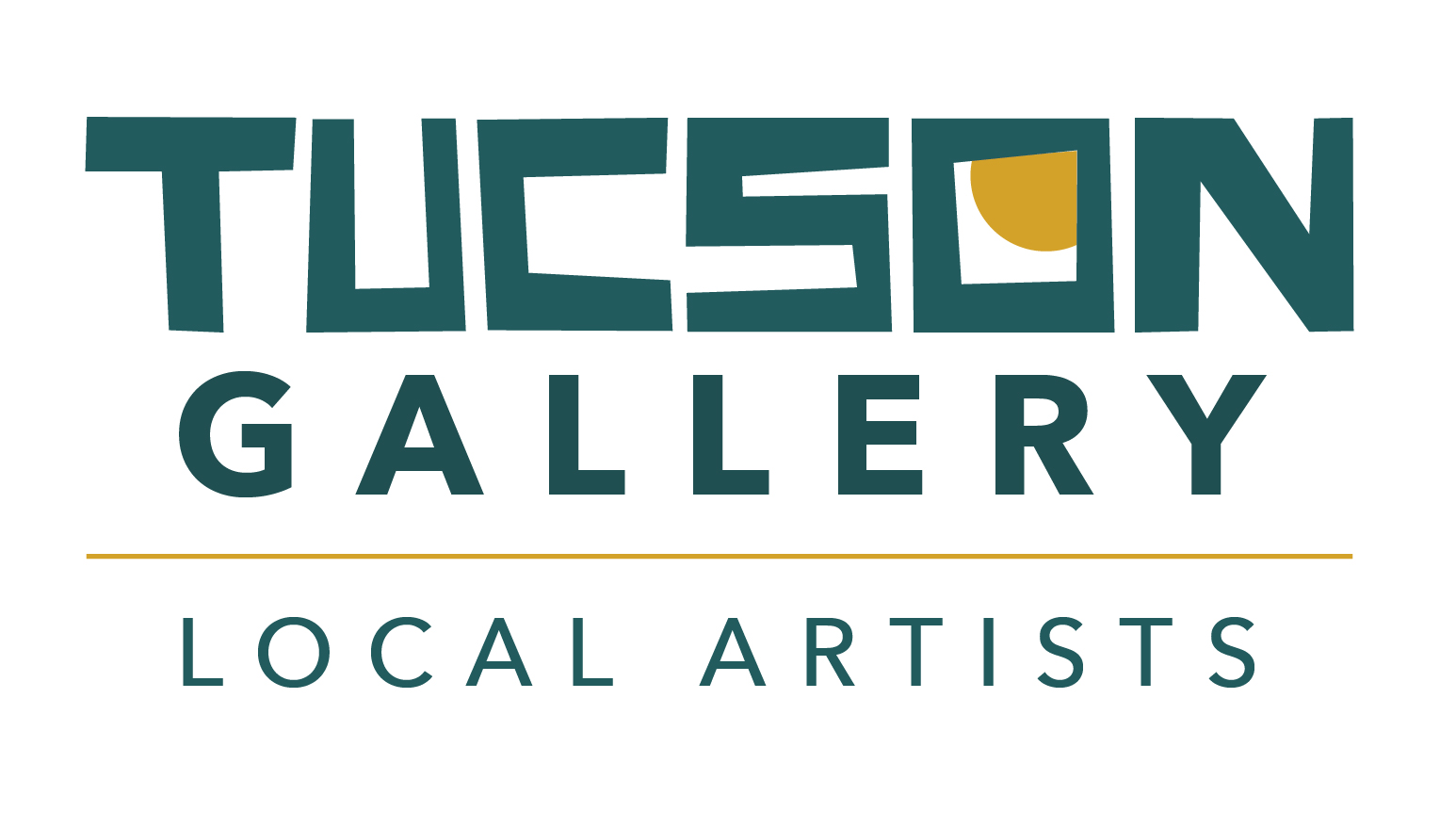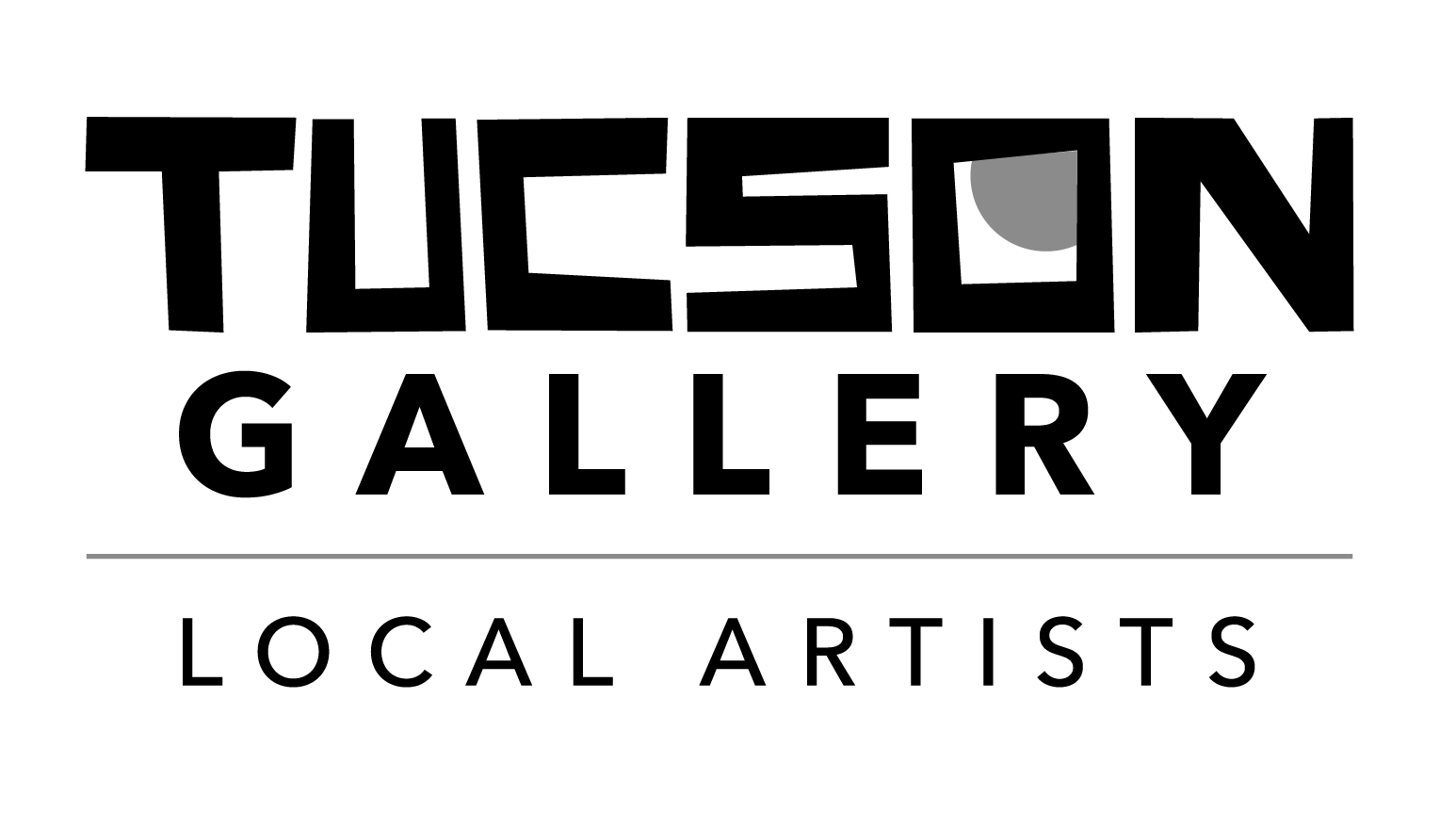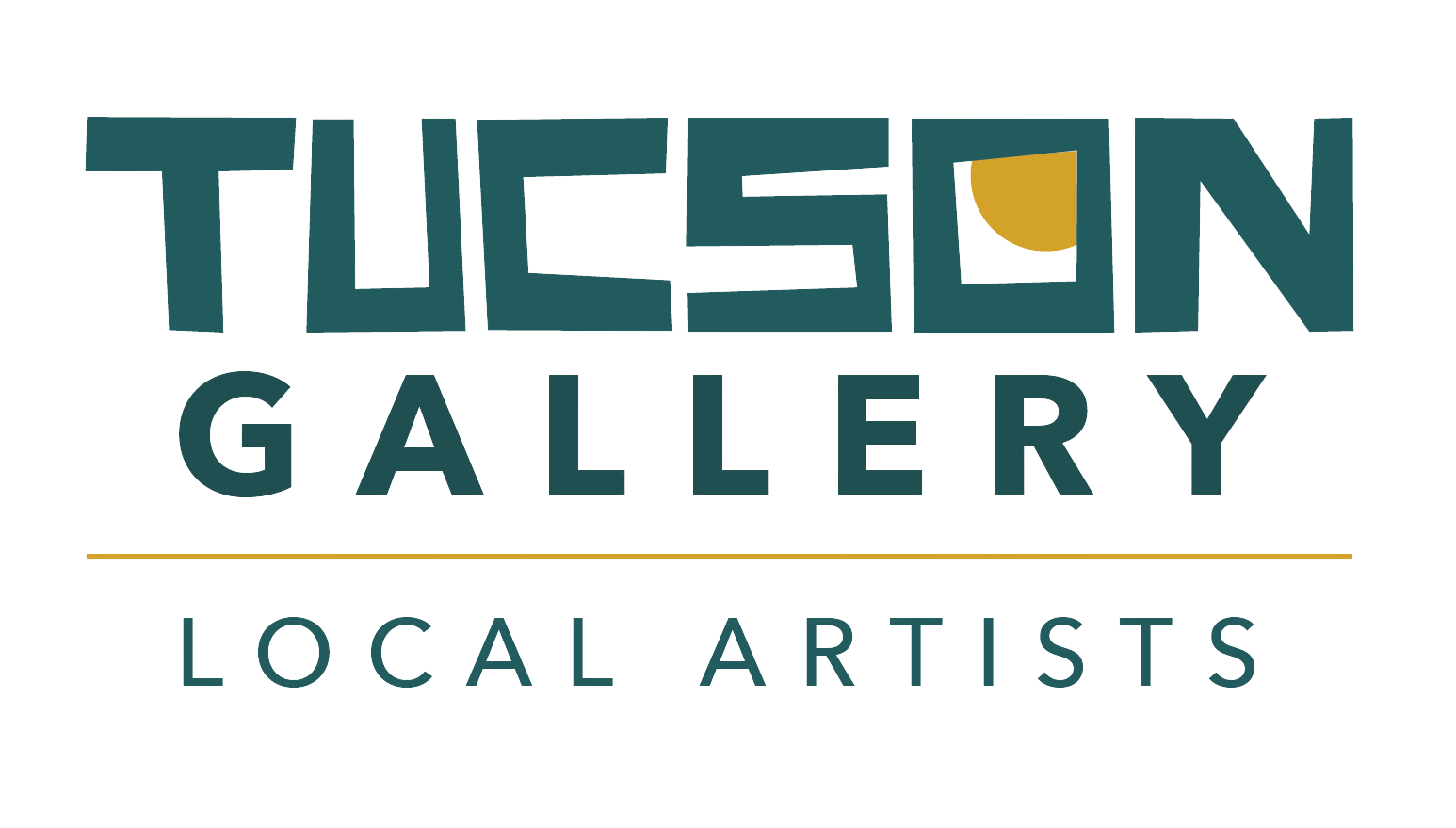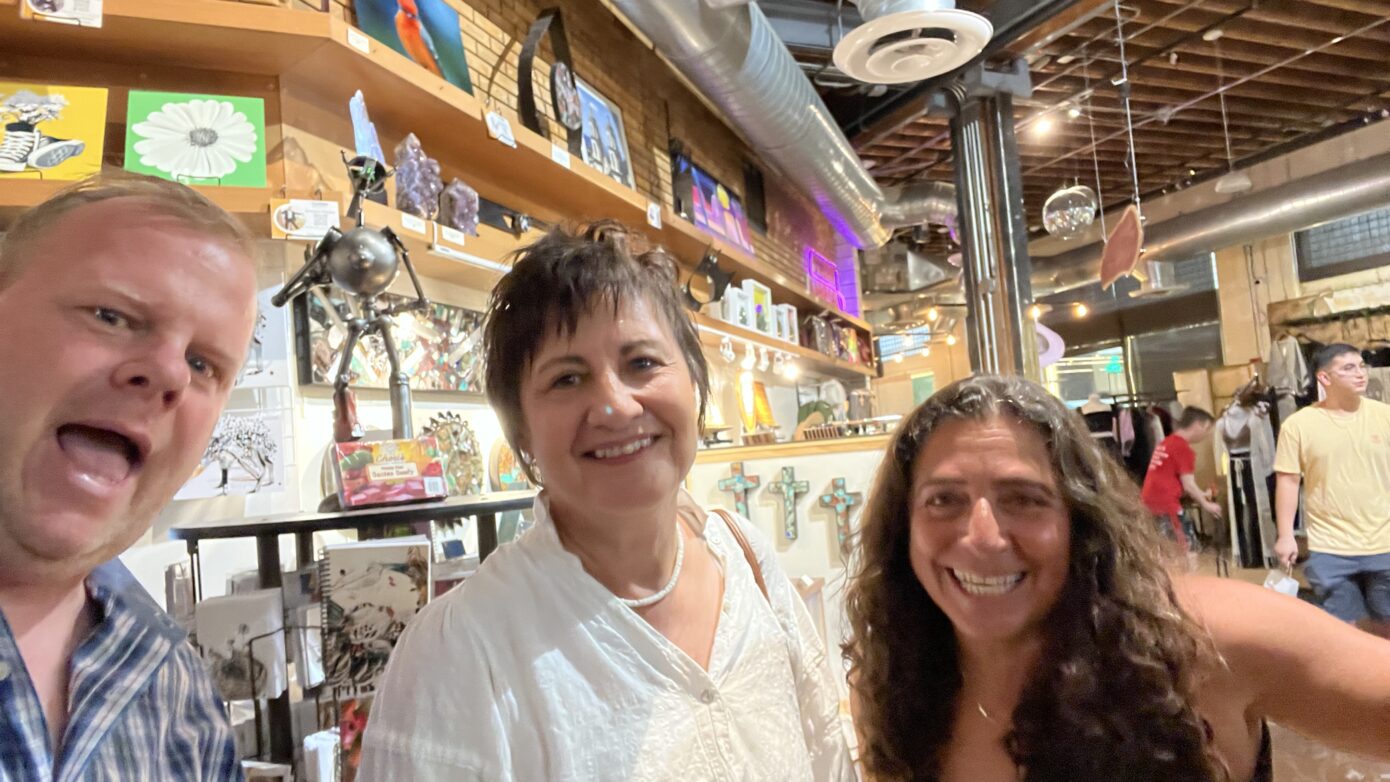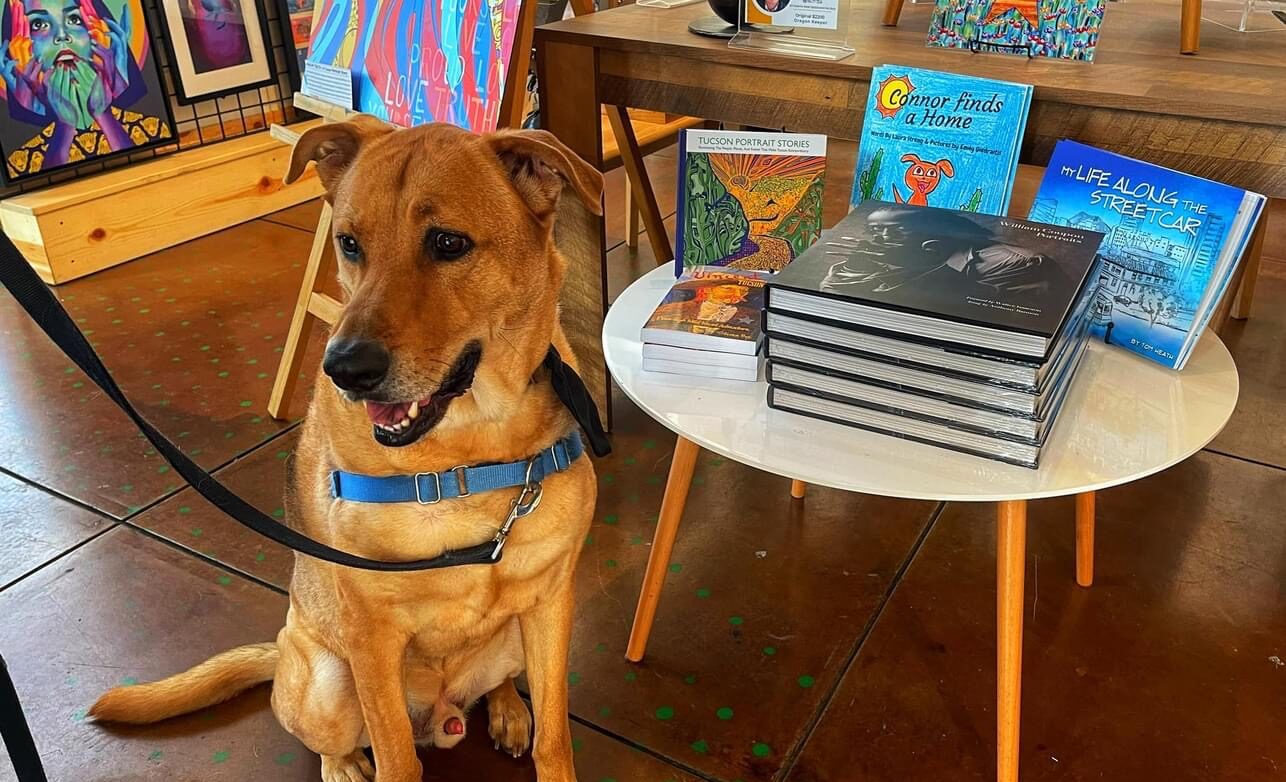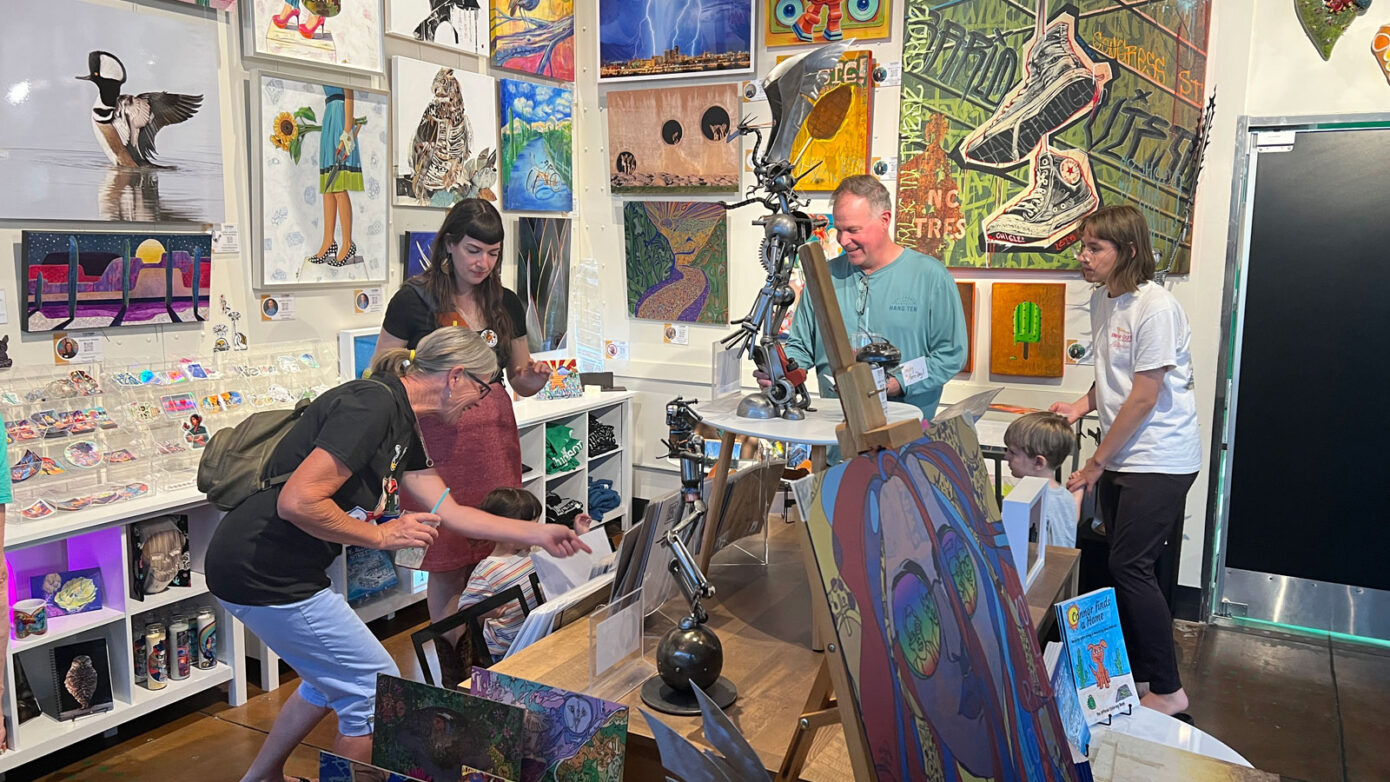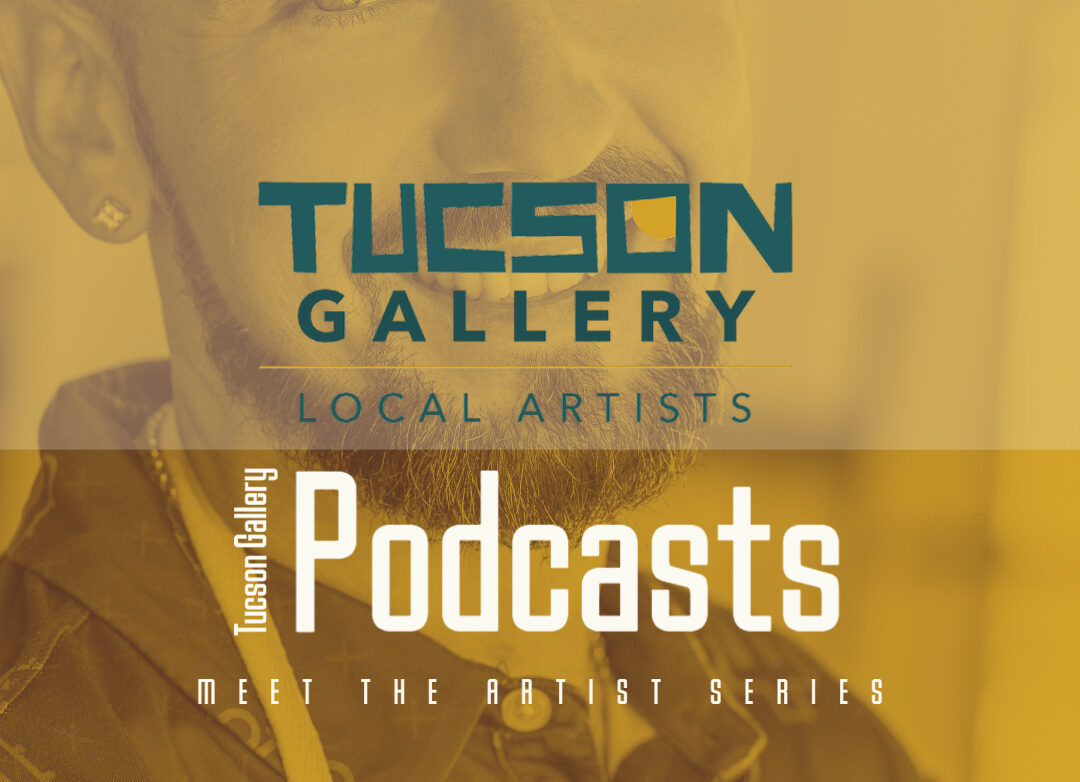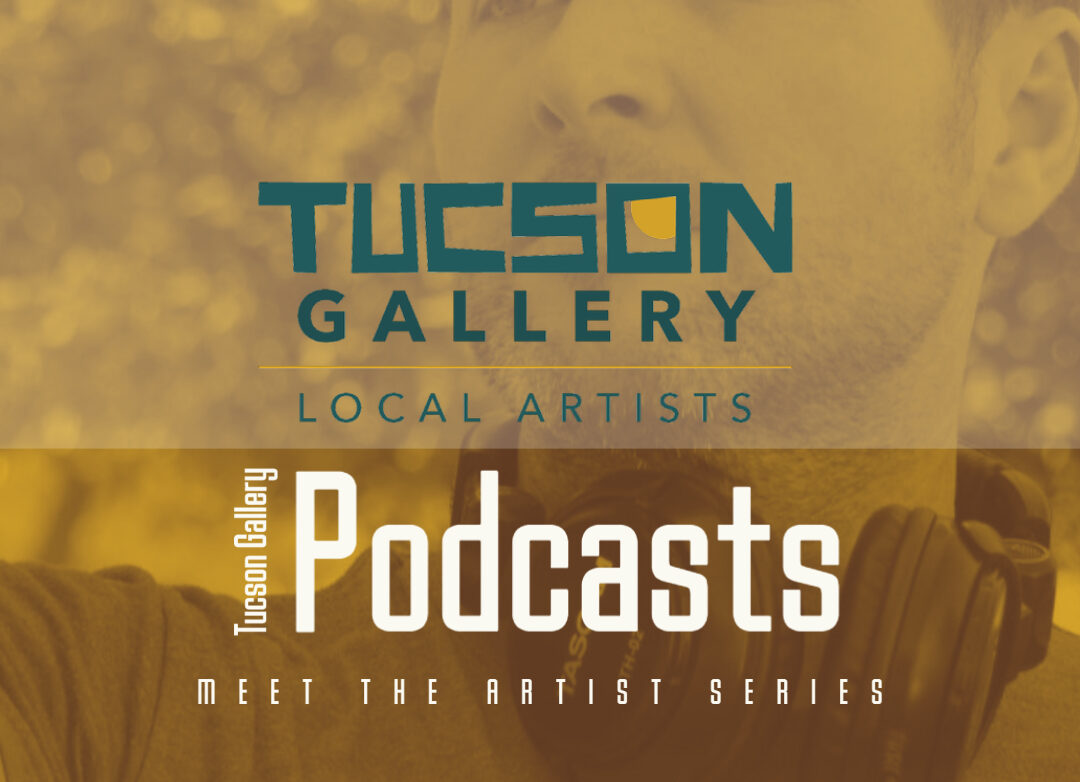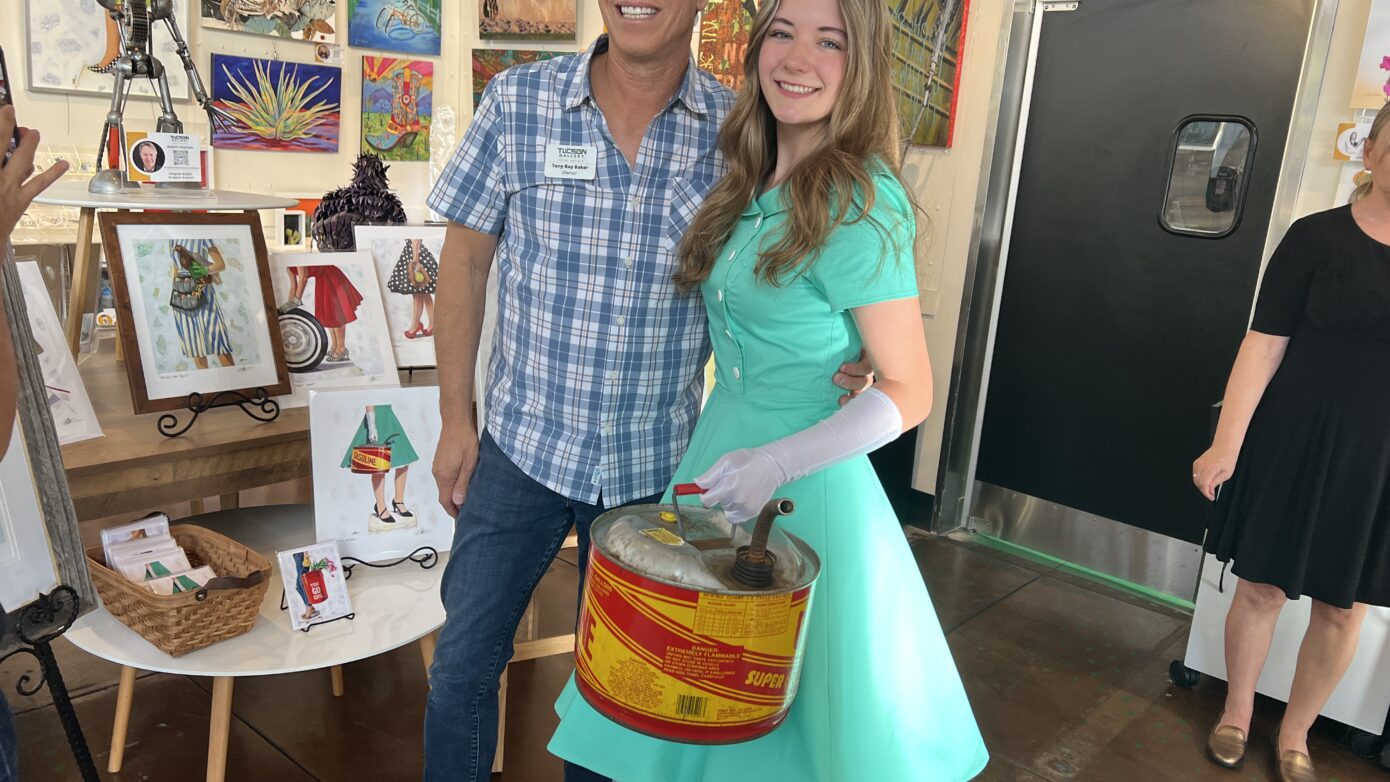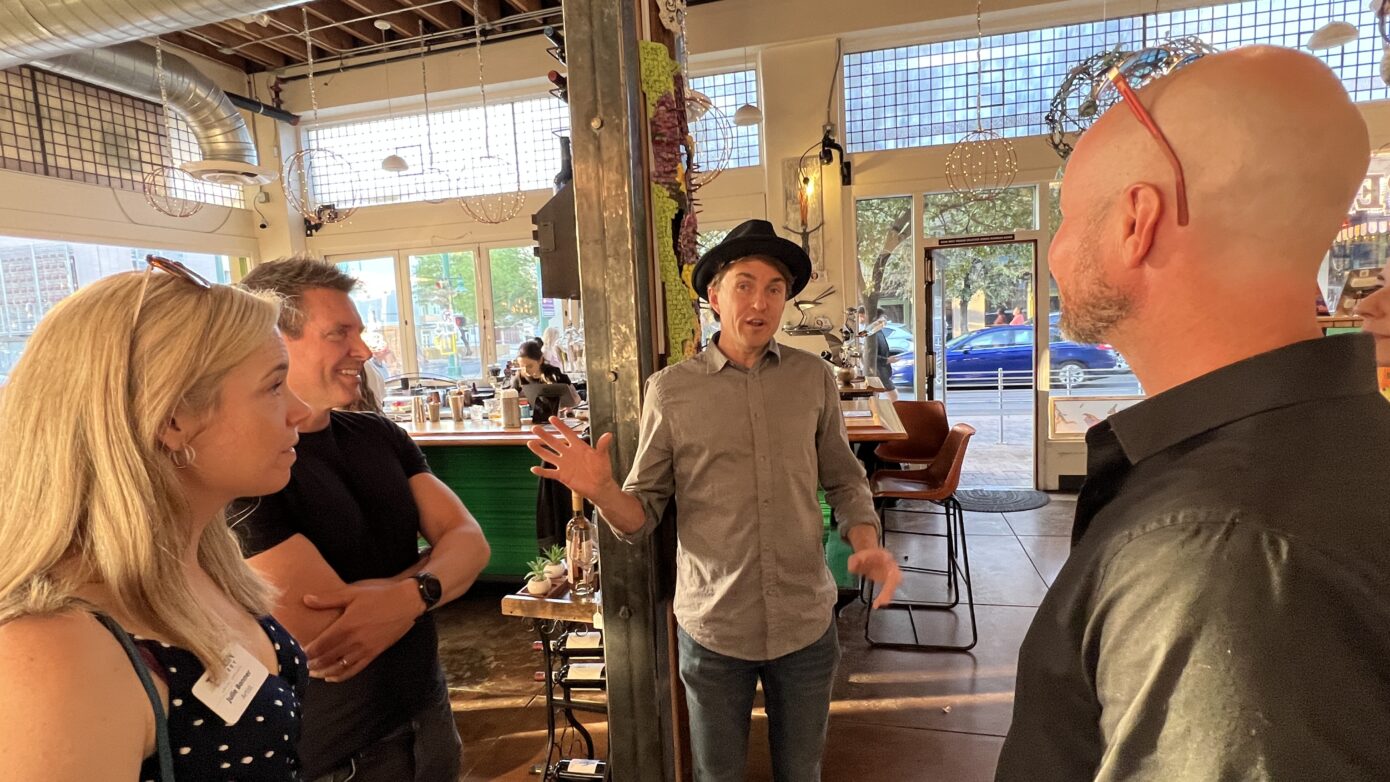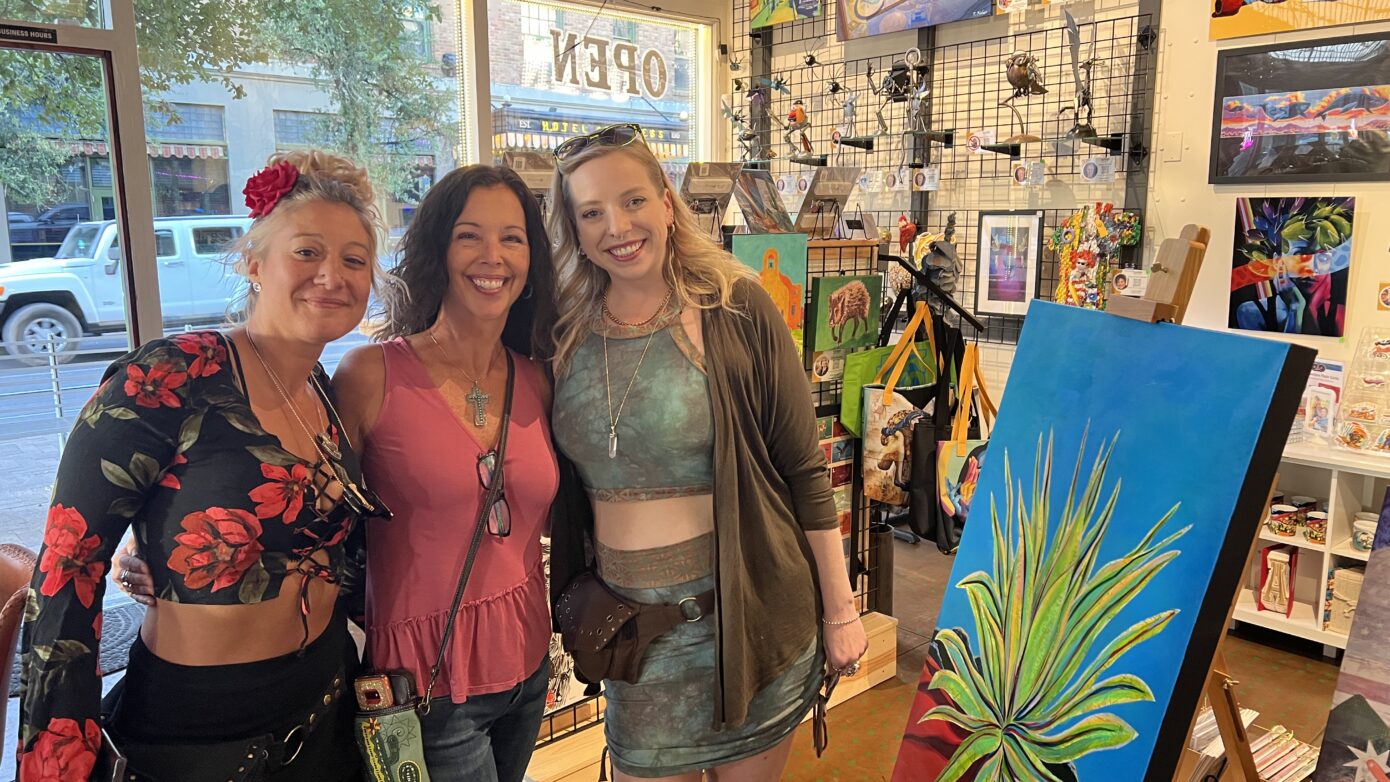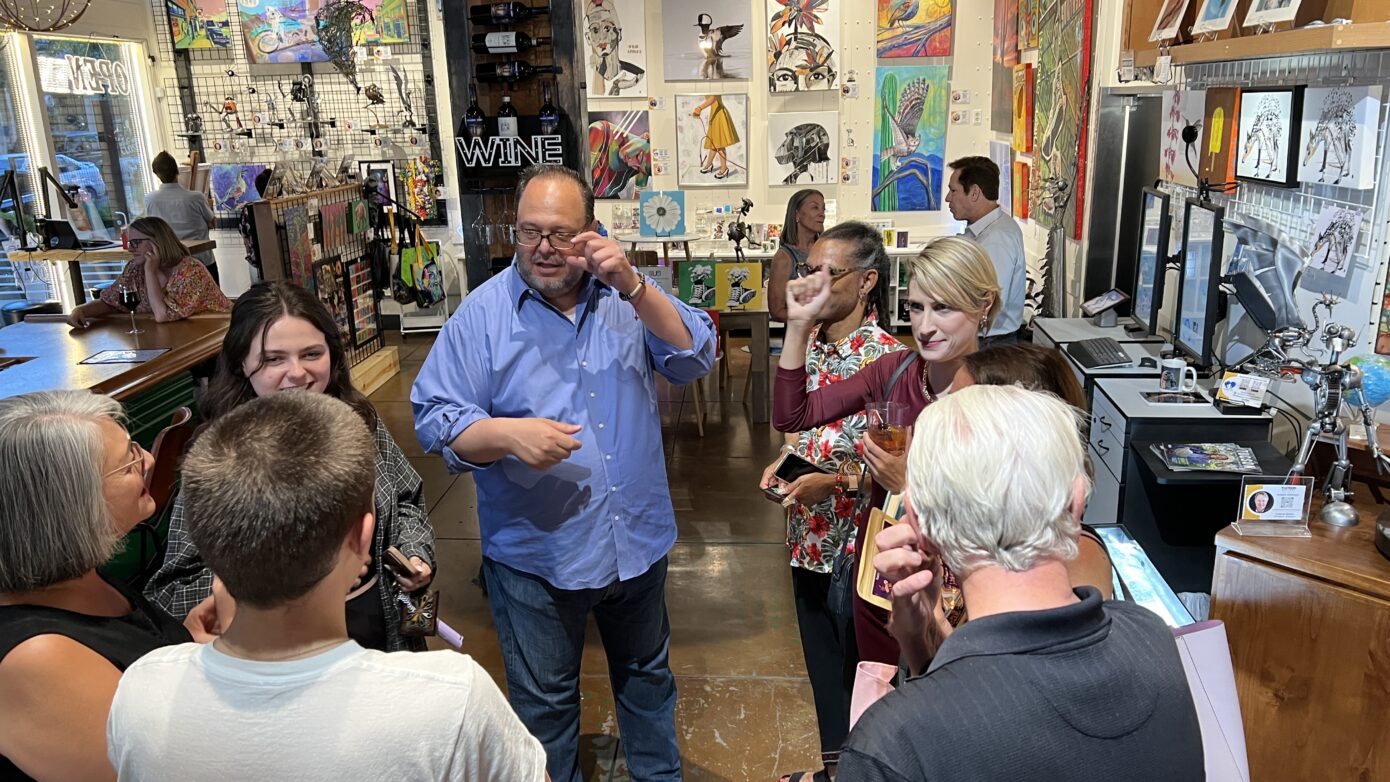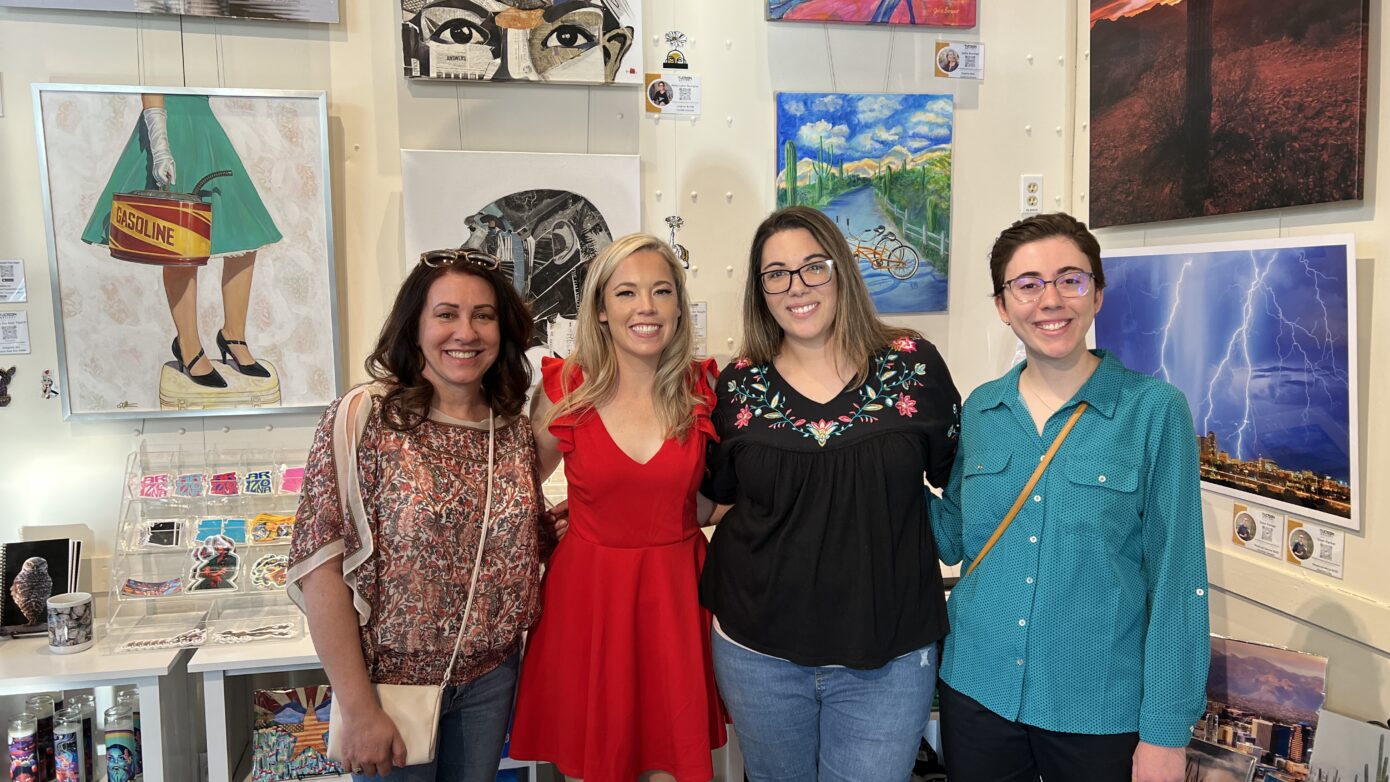Photos










Transcript (Unedited)
Tom Heath
Welcome back to another raucous Meet the Artist event. We got a big turnout here tonight for our artist, Lisa Agababian. We are at the Tucson Gallery inside of the proper shops at 300 East Congress. It’s in downtown Tucson, across the street from Hotel Congress. We represent about 30 different local artists here in Tucson, and every now and then, we’re lucky enough to get them to come in and meet the public and share a little about their history and their story. And when they do, we steal a little bit of their time and record these Meet the Artist podcasts. If you want to learn more, you can head over to our website, thetucsongallery.com. On there you’ll see the schedule of events as well as past episodes of Meet the Artist. And then you can also see all kinds of merchandise for sale. In some cases, you can buy reproductions. But our artist today, it’s kind of hard to reproduce what she does because it’s all out of ceramics. But, Lisa, welcome to the show here.
Lisa Agababian
Thank you. Glad to be here.
Tom Heath
Yeah, we’re super excited. You got a big crowd here for you. People must like you. I’m going to try to move the microphone just a little bit closer to you there. So I was reading your bio, and I found it very interesting because a lot of the artists that we work with, they’ve come from a creative background. But you were, like, in computer software or computer. What were you doing?
Lisa Agababian
I was a computer consultant for many, many years, and I did a lot of work for nonprofits in Tucson and many, many nonprofits in yeah, but I’ve always had my hands in the clay, so I never felt like the clay is very important to me since I was a young person.
Tom Heath
Okay.
Lisa Agababian
And so even though I didn’t get the encouragement to move in the art direction and I went in a little bit of a different direction as far as my formal education, I always had my hands on the clay. Okay. But, yeah, I’m a techie. I’m a nerd.
Tom Heath
We don’t find too many of the artists that are techies. There’s, like, the left brain, right brain. You got all the whole brain working.
Lisa Agababian
Sometimes one works better than the other.
Tom Heath
At least one of them is working. Sometimes none of mine are working.
Lisa Agababian
I hear you.
Tom Heath
So you’ve always been working with clay. Do you remember what drew you to clay the first time?
Lisa Agababian
Oh, yeah. I was at an Armenian summer camp in upstate New York, and I remember taking a clay class and got my hands in the clay and just felt like this felt like home to me. And although I was interested in a whole lot of other things, I just kept going with it. I ended up becoming a camp counselor in ceramics, and I was there years. I say years, summers, like two months out of the year, but just to.
Tom Heath
Kind of get that bug and then all of a sudden you’re like, okay, now not only do I enjoy it, but I want to teach and train.
Lisa Agababian
Oh, yeah, you want to share your passion with other people because you can get really creative. Not only just throwing on the wheel. I was obsessed with throwing on the wheel as a kid, and I just obsessed with centering clay. But that’s the beginning of everything. Once you get centered, you can go anywhere.
Tom Heath
I think that centering. Then that’s probably like that computer side of you, that everything’s going to be right there. Right. Perfectly centered. And then the artistic side takes over and says, okay, now we’re going to create something.
Lisa Agababian
Now we’re out. Yeah, sky’s the limit.
Tom Heath
That’s beautiful.
Lisa Agababian
But yeah, I always got into it, and I also got into a little bit of sculpting, even though I was obsessed with throwing on the wheel.
Lisa Agababian
The minute you get your hands in the clay, it just kind of takes over. You see things just squishing a piece of clay. But then, like I said, I was obsessed with throwing on the wheel for many years.
Tom Heath
Now. I have to admit, I have a bit of a clay background. I think I made in fourth grade, I made an ashtray for my mom who doesn’t smoke, but that’s all I could figure out. I don’t think it started out as an ashtray. It might have started out as a bowl, but ended up as an ashtray.
Lisa Agababian
That’s so funny. You always keep cutting it down. You keep trimming the lid of the I should say the lip of the piece as you’re working on the wheel or if you’re working with coils, but it’s all so much fun.
Tom Heath
Well, that was the extent of my ceramic background, but I do remember I made it. And my mom was very gracious. Even though she doesn’t smoke, she’s like, we have friends that smoke. So there you go. So you did the corporate world, so to speak, for a while, and are you still doing that or are you an artist full time at this point?
Lisa Agababian
I am an artist full time. Wonderful. I felt like the world I got into was really the nonprofit world.
Tom Heath
Okay.
Lisa Agababian
I was in the corporate world, and that threw me for a loop, and I really didn’t like being in that environment. But once I started working for nonprofits, I felt something more personal with people, and then it just grew from there. And then I always had my hands in the clay. So even as a computer consultant, I’d still be creating and giving things away all the time. And so people always knew me as a clay person, even way back then.
Tom Heath
Yeah, I would imagine if you’re giving it away, they’re probably like wanting to really know you as a play person. But anyway, nowadays they’re not giving it away. Do you remember kind of that time frame like how you transitioned from being employed in one career and then just moving full time to an artist. Were you doing both for a while or did you just one day wake up and say, I’m done with this computer stuff?
Lisa Agababian
Yeah, I’ve always had my hands in the clay because it was part of my sanity and my serenity. And so I just needed that everybody has something where they kind of well, hopefully people have something where they can ground themselves in. Although I did love what I was doing with the computer work too. I just felt at home in the studio and working with clay. Anyway, the transition happened. Really big transition is I had many losses in my life, and I don’t want to go too much down the rabbit hole here because I can, but I had many, many losses in my life.
Lisa Agababian
The first one was the wake up call with my mom. When she passed on, she was here one day and gone the next. That just pulled me out of the water. And even though I was doing working with computers at the time, I just kind of got that message, like, right, be here now. That was the message. If you’re not doing or pursuing or moving slowly in the direction of what you love to do, you’re missing the boat right here, right now. And I got that message of enjoy here now. And then when my dad had passed, that was when I transitioned full time. I was like, my dad was pretty nuts. But anyway, God bless him, he’s like, Are you still working? Are you still working? You’re still making money? But anyways, I think we’re going to.
Tom Heath
Do a podcast just on your dad. Like a whole separate one. It sounds like there’s some good stories.
Lisa Agababian
Yeah, I think so. But anyway, so when he passed, I really kind of went low, and I felt like I was always kind of analytical and I was in my head, and I loved organizing and problem solving and stuff. And then it almost felt like a time where the universe was just taking me from my head to my heart. Literally. It was like I couldn’t think logically anymore. I knew I was going under on some level and that I should just go with the flow. And I feel like I just really made it to my heart. And then after many years, I feel like I’ve integrated both. Although, as you know, I can’t even keep a contact list these days. But I’m definitely into the art, and I do like having exchanges with people, and I do love what I do. And the people that I used to work as a computer consultant for, they all knew my heart was in the clay, too. Although I think I did perform pretty well for them at the time.
Tom Heath
Well, you did it for 20 years, so you don’t do something like that. Not well. You do it well, because otherwise people aren’t going to be hiring you.
Lisa Agababian
Yeah. And this was really, though, following my heart. It was like time. Instead of focusing outward, it was like focus inward. And who is Lisa and what is Lisa doing? And it was like, 50 million other questions of like, and not doing it. What are my interests? What are my passions? And not doing it just to do it for performance or money or kudos. It was almost like I was reborn again, and I was reparent parenting myself all over again and finding your purpose. Yeah.
Tom Heath
This is like life lessons here on Meet the Artist. This is fantastic. We’re going to start selling this as, like, coaching. This is great stuff. We talk to artists about all the time, about finding this passion and driving it, and people get to it to different ways. But this is kind of the first time that I’ve heard someone say, you know what? I forget about what I enjoy doing. Like, what am I supposed to be doing? And it sort of took you in that direction.
Lisa Agababian
Right. And it’s scary to go in that direction, but I had a little light that was just like I was trusting that and just going in the direction. And you never know how things unfold, but we’re all on some kind of journey and unfolding. Right.
Tom Heath
We talked last year and said, hey, I’m going to have a gallery. I don’t think I would be oh, yeah, sure.
Lisa Agababian
That’s right.
Tom Heath
That’ll be the case. Thank you. So we’ve talked a lot about hearts, and if you’re listening, I encourage you to head to our website, thetusongallery.com, and look up Lisa’s profile. You’ll see pictures of what she has in the gallery. And what we carry are just beautiful different sizes. These beautiful hearts with they’re not just ceramic hearts. There’s, like a mixture. You’ve sculpted items on these. But do you do mostly hearts, or is that just what we carry?
Lisa Agababian
No, I should say yes, I do hearts. That’s all I do. Yeah. Today, I mean, I used to throw on the wheel, but today it’s all heart sculptures and everything’s hand built. And it’s so funny. I went from throwing on the wheel as a kid and doing a little sculpting, but this is all hand building, and I love it. I go into a Zen mode and listen to music and podcasts, and I’m in heaven in the studio. For the most part. Everybody has good days and bad days, right? And I love the handbuilding, and I think it’s because I found my purpose. And I feel like something just keeps feeding me, and it’s just like and sometimes I just have to write down if I get an idea or I make a connection between the heart and something else, immediately write it down. Because clay is a major process. It’s not like painting where you just paint, and I don’t want to put down painting at all because I’m amazed at some of the painting.
Tom Heath
We’re going to have a throw down. Now, ceramics, the painters, that’s going to be a fundraiser. Put them in the boxing ring there and see what happens.
Lisa Agababian
No, I have total respect. But also, clay, as you might know, too, is a process. You create a form and then it has to dry.
Tom Heath
From my third grade ashtray, I do remember that process. Yours is probably a little bit more in depth.
Lisa Agababian
Yeah. But whatever you’re creating then has to dry. Then it goes into the kiln. You fire it for first firing. A BISC firing is at least like 12 hours, if not more. Then once it comes out of the kiln, it’s more brittle. It’s not as soft and breakable and porous. But then you go through the whole glazing process and you paint to use colors and stuff, but what you see is not what you get in glazing. And when you’re painting I’ve heard that.
Tom Heath
I’ve heard that from other people, though, because the heat transforms it. So you have to know with enough experience what it’s going to look like when you’re done, because it looks different going on.
Lisa Agababian
Exactly. And there’s a gazillion glazes on the market, and there’s so many ceramics is so vast, and that’s the beauty of it, too. You meet another artist and so different than what I might be doing or somebody else is doing. And there’s high fire and low fire and raccoon. It’s wonderful.
Tom Heath
And I’m going to use the word just, and I don’t want to put anything down. But you don’t do just hearts. Your hearts have so much character to them. And a lot of times there’s like hummingbirds coming out or there’s rivers running through them or there’s a house. First of all, how do you get to that? Does it happen during the creation? Or do you have a vision beforehand and create it?
Lisa Agababian
Sometimes when I have an idea or because I’m having a connection with someone or something, or I’m in nature and I have an idea or whatever, like I said, I have to write it down because then it will manifest later. I have to really prepare to okay, now I’m glazing. Now I’m working with greenware and working with clay. But sometimes I will just get in the studio and just start working on a piece and then it just kind of unfolds, too. So I would have to say, for me, it’s a little bit of both.
Tom Heath
Okay. And then when you’re creating, some of these look like they’re multiple pieces that are put together. When you go through the process, at what point do they come together?
Lisa Agababian
A couple of different ways. Like when I’m working in the greenware stage, when I’m working in wow, it’s getting a little rowdy out there.
Tom Heath
Lee’s got some fans here. We’re going to have to hurry up.
Lisa Agababian
Where was I? In the greenware stage. So in the greenware stage can you explain?
Tom Heath
I don’t know what that okay.
Lisa Agababian
Greenware is when you just take when you’re just getting some clay out of the bag. Okay. And so it’s like straight from the earth, pretty much. And it’s soft and it’s malleable. So you start working with the clay and I just kind of totally lost my traight.
Tom Heath
I was just trying to figure out when the pieces come together.
Lisa Agababian
Okay. So, yeah, I’ll usually work if I’m handbuilding, I make the heart form first, and then if I embellish it with, like if I want a hummingbird coming out or I want roses or lilies or whatever coming out of the piece, then I make those separately. But everything’s got to be consistent as far as the drying goes because I have to pull it all together if I’m doing that in the greenware stage. So I’m connecting the pieces together. So like roses or flowers, any flower just coming out of the piece, I attach the pieces in the greenware stage before I do my first firing.
Tom Heath
So when it comes out of that first firing, it’s already brittle. And these things are so delicate.
Lisa Agababian
That’s right. When you say delicate, I mean they’re more delicate before the firing because at that point well, if it falls in the biscuit stage, you can lose the piece in the greenware stage. It’s very brittle. I mean, it’s very soft.
Tom Heath
Okay. So that could change shape. It doesn’t take much to change the shape because it’s just lean against it and all of a sudden it’s not as hard anymore. It’s a square.
Lisa Agababian
That’s right. Yeah. And then once the piece dries, it’s still fragile. Once goes in the kiln and gets fired to like close to 2000 degrees.
Lisa Agababian
It actually goes through a process of drying. And basically what we call that is vitrification.
Tom Heath
Okay.
Lisa Agababian
And so it loses the water.
Tom Heath
Not only are people here to see her, people are calling. Lisa, this is incredibly popular today. Might be the most popular safety artist podcast we’ve had.
Lisa Agababian
You’re, sweetheart. Thank you. You’re so funny.
Tom Heath
With your passion for this. Do you teach? Are you doing classes? Do you help others with this?
Lisa Agababian
I occasionally teach. If I get a group of people together that want to do something, I will throw something together for them if I have the time. Like if I’m in the middle of doing a solo exhibit or a sculpture festival, I’m in the middle the midst of a lot of shows. I can’t do that, obviously, because I’m in the middle of production and creation. I say production because I make my self care spiral heart ornaments for the holidays and my heart grounding stones and things like that. But even when I’m just creating, you really have to be there. I’m with the clay creating, but occasionally I will throw class. I used to do more classes than I do right now, but I love sharing my passion with others. And I love sharing. Even when people come, maybe even this evening. I love sharing my process too. There’s a couple of secrets I’m not going to share, but for the most part, I pretty much share the whole process.
Tom Heath
I have heard in the ceramics world there are some trade secrets because of how things get put together. Like you said, there’s so many glazes and processes. Once you found one that works, it becomes sort of your style as well.
Lisa Agababian
Right? And I think that’s just how it is for everyone. You find your way and then that’s your way.
Lisa Agababian
I have shared some of the secrets with some people because I’m just that way. But anyways, it’s about the passion. I think it’s really at the end.
Tom Heath
Of the day, I think sometimes seeing other people succeed is almost as rewarding. How do people follow you? Are you on social media? Website. What’s your stuff?
Lisa Agababian
Yeah, I have a website, Fuchsiadesigns.com. And I’m also on Facebook. Everybody tells me I need to be more on the Instagram, but I haven’t kind of gotten too savvy with also, I’m a nature girl, so I really need my nature time or be in the studio. So I do share my pieces on my website. I will share all of my larger pieces on my website. Anytime a piece is finished, I get a photo of it.
Tom Heath
Fuchsiadesigns.com.
Lisa Agababian
Yeah.
Tom Heath
And then is the Facebook the same.
Lisa Agababian
Or is it under your name on Facebook? I have one profile that’s Lisa Agabian and then I have another one which I don’t even know why I started, but it’s Lisa Agabian, ceramic artist. I don’t know what I was thinking. But anyway, so I try to post on both. But if someone friends me as Lisa Agabian, they’ll see all the work.
Tom Heath
Lisa is another one of these fabulous Tucson artists. We are so blessed. When we opened the gallery, a lot of it was to share to the world how lucky we are in Tucson. And this is just another example. And literally the places is filled with people that are here to hear her. Tonight, do a little bit of presentation. If you want to see or you want to hear any of our past episodes, you can go to thetusongallery.com and under the media section. All of those episodes are there. If you find your favorite artist, they probably have a podcast and we have recorded these on video. So we’ll see some videos coming out soon. Just haven’t quite gotten there. Maybe we’ll get the videos out when you get on Instagram.
Lisa Agababian
Yeah, sounds good. I got to do that. That’s kind of funny. I came from the computer world and I’m so like went the other direction.
Tom Heath
I think that your gift to the world is your art. And people can see it in the gallery, they can see it online. The Instagram that’ll come, when the time is right, it will come.
Lisa Agababian
Thank you. Thank you.
Tom Heath
Tom, Lisa, I appreciate your time. Thank you so much.
Tom Heath
Whoo. Thank you for listening to Meet the Artist. This is a weekly production by the Tucson Gallery located inside of the proper shops at 300 East Conga Street in Tucson, Arizona. The mission of the Tucson Gallery is to support local artists by providing a space to show their art, a forum to engage with their audience, a virtual presence to connect with global patrons, an outlet to earn a fair price and an opportunity to hone their business skills. Head over to thetucsongallery.com for more information about our live events, listen to other Meet the Artist podcasts and check out the wide selection of art, gifts and other items created by Tucson’s modern, thought provoking and forward thinking artists.
